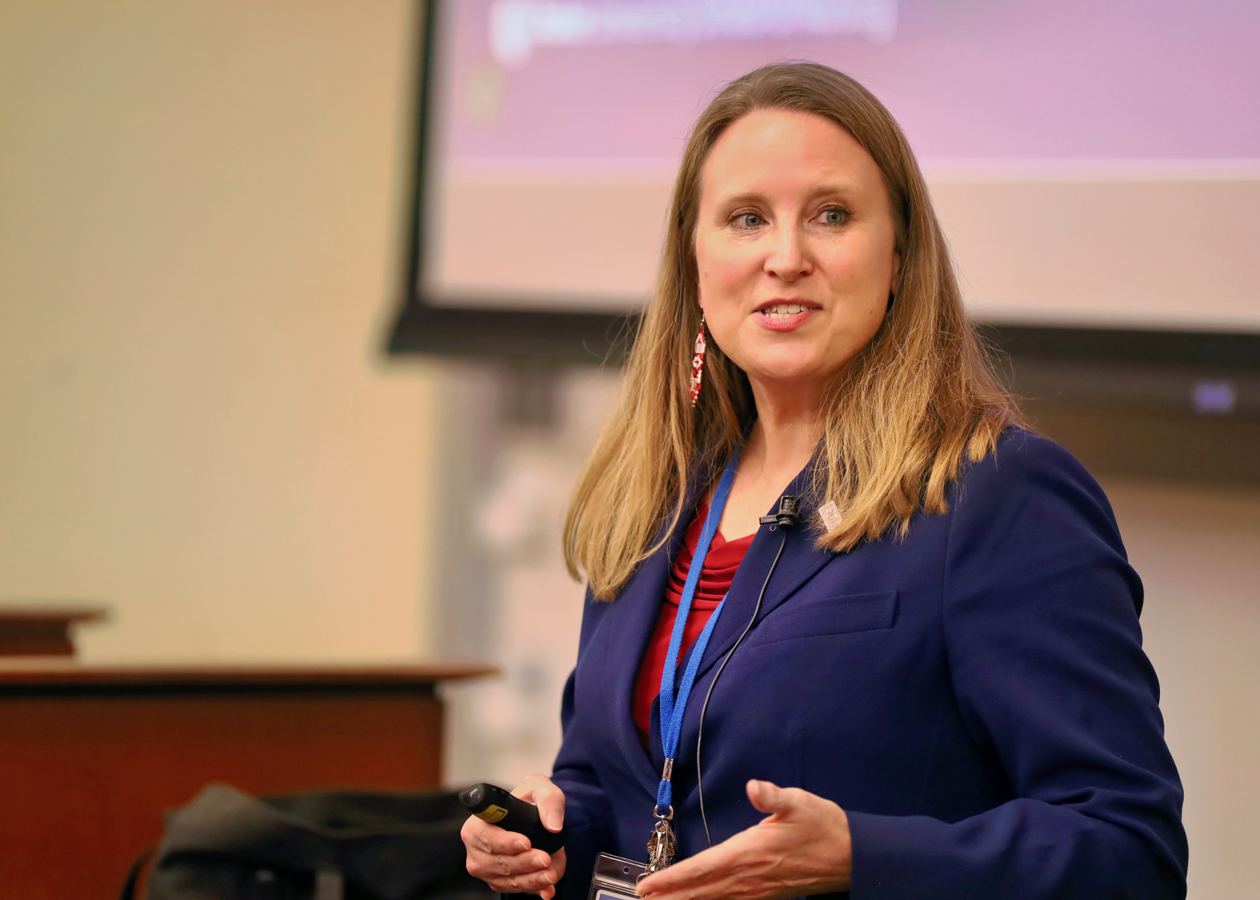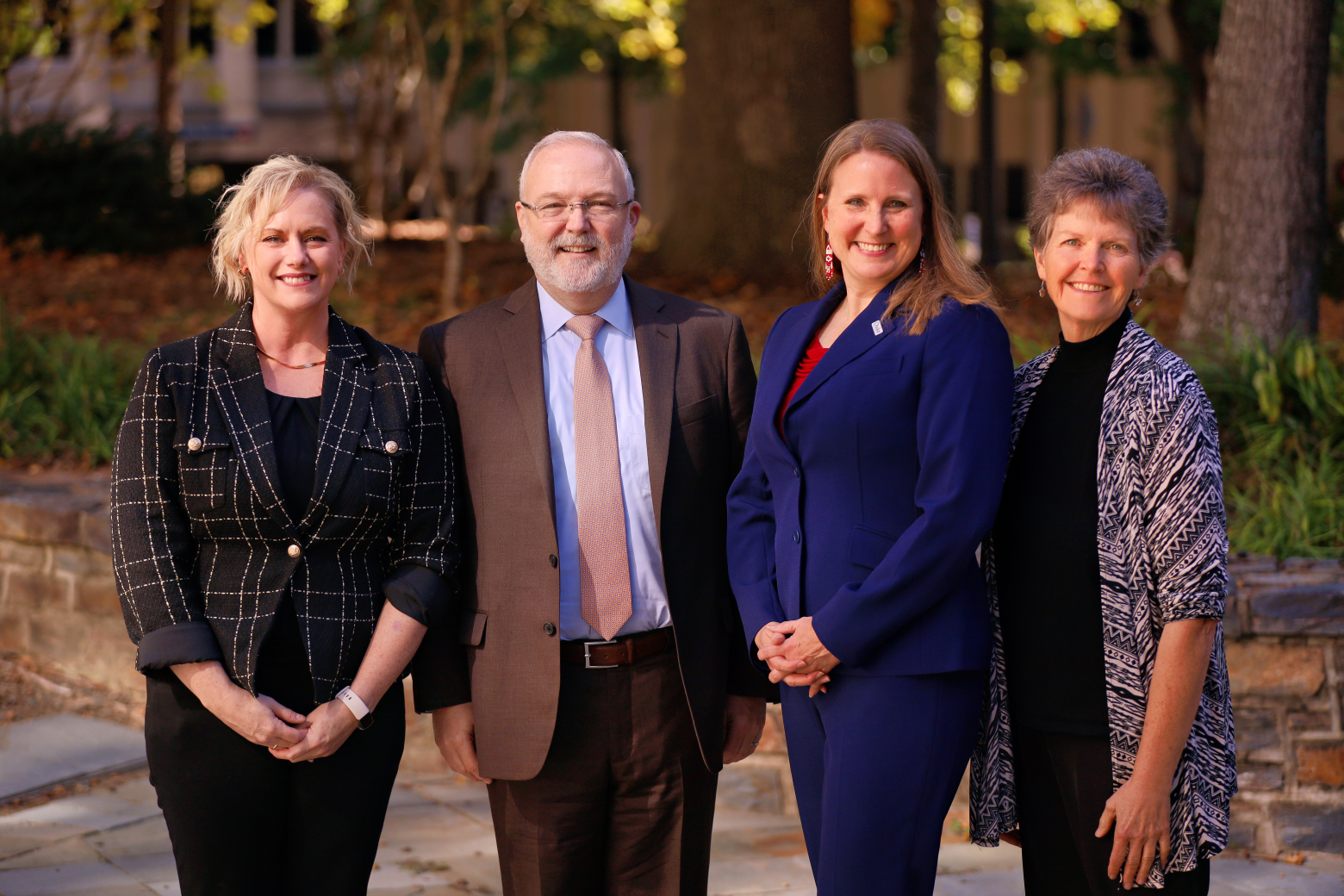Climate Leader in Residence Urges Action, Provides Practical Guidance to Nurses
Climate Leader in Residence Dr. Jessica Castner urged nurses to integrate climate awareness into care, advocacy, and system-level innovation.

On October 22, the Community Health Improvement Partnership Program (D-CHIPP) at Duke University School of Nursing hosted its 5th Annual Community Health Lecture, featuring guest speaker Jessica Castner, PhD, RN-BC, FAEN, FAAN, one of Duke's Climate Leaders in Residence.
Castner’s lecture, held both in person and virtually, was titled “From Crisis to Catalyst: Community Health Nurses Leading the Climate and Health Response.”
Castner highlighted how both providers and facilities play vital roles in addressing climate change and its effects on patient health. Those in the healthcare industry, Castner said, are especially well positioned to bring about change given the scale and scope of their interactions.
“You know your return on investment in creating health is better than almost any other result out there,” she said, emphasizing the potential impact of having “climate fluency in causes, consequences, context, and catalysts in every health setting.”
After painting a grim picture of the impacts of climate change on health—including exponentially increased cardiovascular mortality from excess heat, worsened respiratory disease from poor air quality, mental health problems following natural disasters, and heightened risk of infectious disease—Castner urged attendees to make specific plans regarding how they would take proactive leadership in fighting climate change and its effects.
Evolving Practice for Nurses
Simply knowing about the effects of climate change, Castner said, is a vital step in creating change that will better equip nurses and other healthcare workers as advocates.
She provided practical, concrete steps nurses can take to better serve patients and communities as climate change impacts their health, including adjusting medications for potential interactions with excess heat, providing counseling interventions to prevent adverse impacts, and modifying care and monitoring.
Nurses are well positioned to speak with patients about their preparation and plans for emergencies. Pointing out that a major barrier to getting people to evacuate in an emergency is their pets, Castner urged nurses to speak with patients about creating tailored evacuation plans that take things that matter most to the patients, like pets, into account.
Nurses will need to engage their practice with early warnings of climate and meteorological events, Castner said—for instance, alerts of water contamination—and will need to expand their competencies as diseases from insects that were previously more geographically bounded, such as mosquitoes and ticks that carry Zika, Dengue, or Lyme Disease expand their reach with the rising heat.
Reimagining Nursing and Systems
In extreme weather events, Castner said, the healthcare industry will need to imagine and create guaranteed health service continuity, as well as prepare its facilities for patient surges.
“The infrastructure we have now may not be sufficient for the future,” Castner said. “How would we have to change how we organize healthcare and organize neighborhood-level care?” Castner added that for those who worked through the COVID-19 pandemic, “That kind of agility may become the norm.”
Pointing to the need for reduced greenhouse gas emissions by the health sector, Castner expressed excitement at the expansion of telehealth and virtual nursing, which she called “crucial for rural access, for diminishing the carbon footprint, and for community and public health nursing.”
Becoming Nurse-Advocates
Systems-level change, Castner said, will require nurses to leverage their specialized knowledge to engage with legislators and policymakers.
“Especially with North Carolina being the second largest rural population in the nation, what are existing outreach models, especially economic and job retraining models, and how do we put our nursing energy and impact there? How are we making those models of care for tomorrow that work hand in hand with that economic development that our policymakers care so much about?”
“A lot of the things with the most emission reduction impact will be invisible to us as clinicians,” Castner pointed out, such as supply chain issues and facility modifications, yet nurses can still attend community meetings and briefings to share stories that will drive change.
Moving from Crisis to Catalyst
Castner said she is encouraged by the progress she sees across industries, including research here at Duke. “Some of the cross-disciplinary work happening here blows my mind,” Castner said.
Despite the enormity of climate change, Castner encouraged the audience to remain hopeful and determined. “When I was born, my mother drove 200 miles to the hospital during the height of lead pollution in the air,” she said. “And thanks to a concerted policy solution over half a century, we have done so much to reduce the health effects of lead. The same progress we’ve made on lead exposure in children is the progress we can make on climate.”
She closed the lecture with a call for action, encouraging each individual to identify the specific actions they can take as well as to think creatively about new solutions. “Let’s not forget we’re the innovators of the future, and we need to come up with that new, better choice.”
